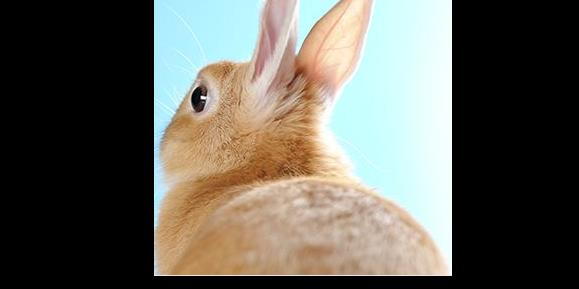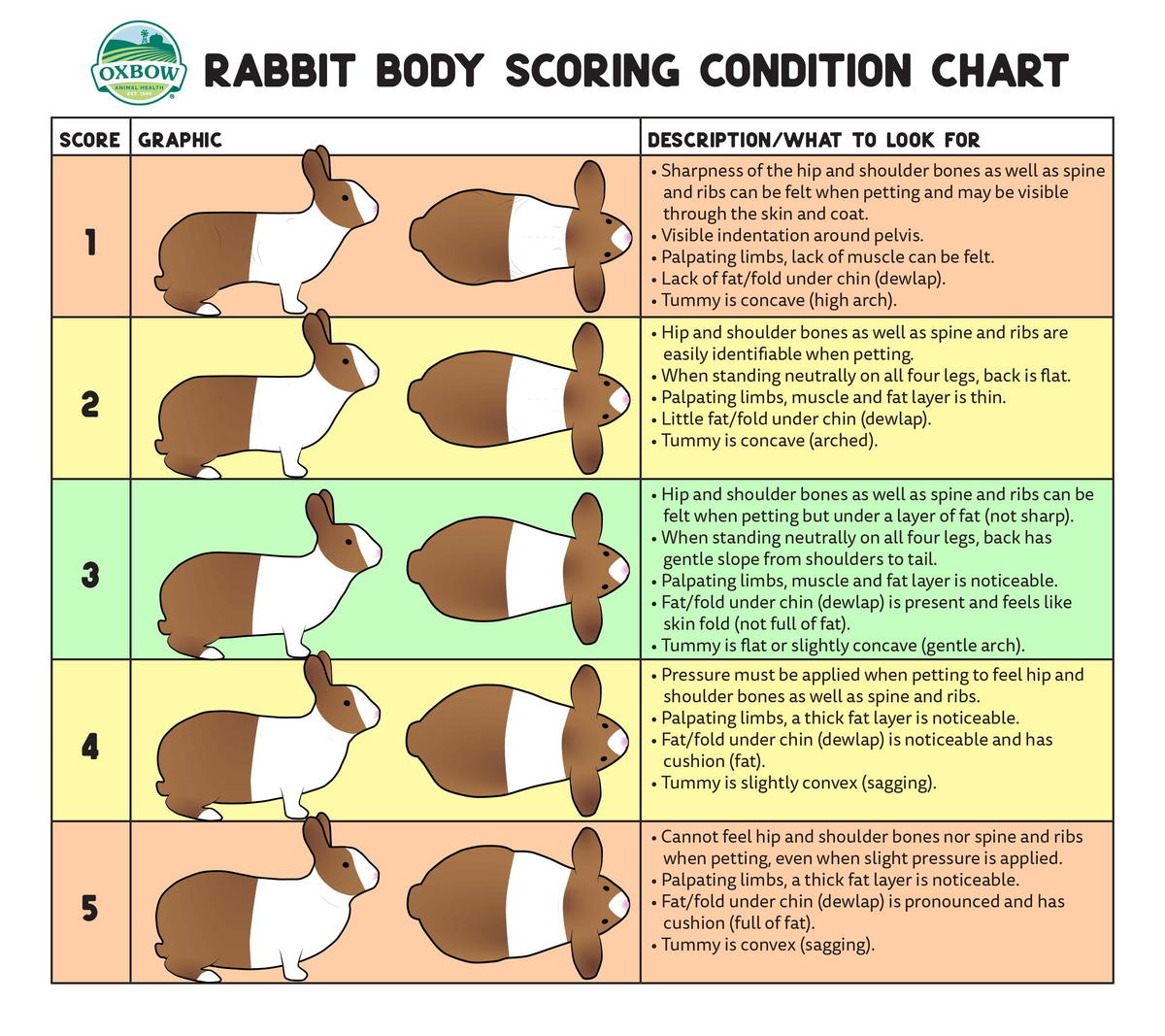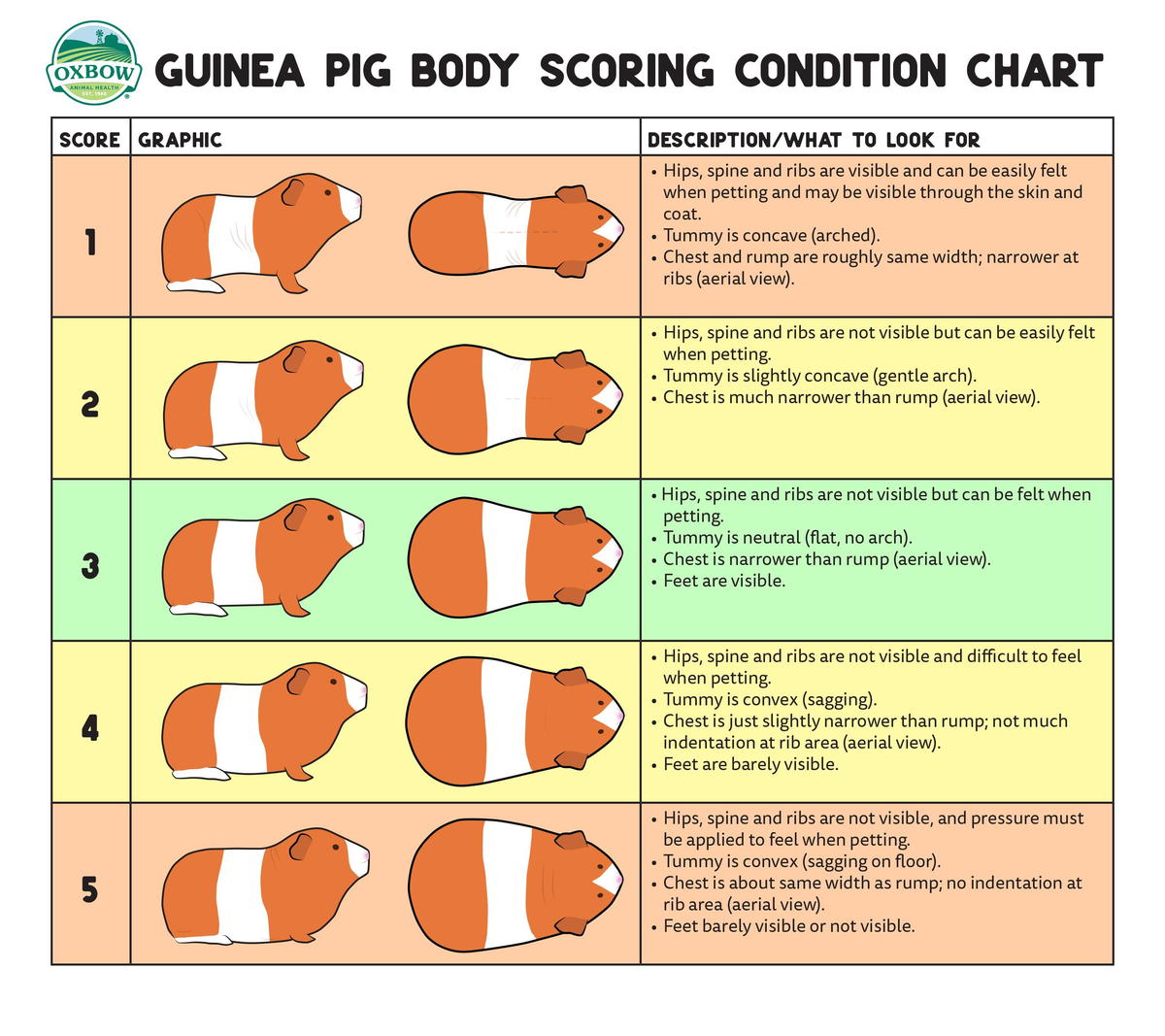
Is My Rabbit or Guinea Pig Overweight or Underweight?
-Content/Images provided by Oxbow Animal Health
No one likes to be told their pet needs to lose weight. Furthermore, the news often comes as a shock to many parents because healthy rabbit and guinea pig weight and body condition frequently isn’t common knowledge. We all love our pets and want them to be happy. Oftentimes, we associate that happiness with food and treats because our pets get very happy at the thought, sight, or smell of tasty. Treats and food in general also facilitate positive interaction and help to create an amazing human-animal bond. However, excess food and treat consumption can quickly lead to an overweight pet. You don’t have to stop giving your pets treats, but don’t forget to balance happiness with health.
Problems associated with obesity run far deeper than just carrying around a little extra weight. Overweight pets are more prone to several health issues including skin disease, pododermatitis (inflammation of the feet and/or paws), cardiovascular disease, hypertension, arthritis, gastrointestinal stasis, and bladder sludge just to name a few. Some of these arise from physical limitations of overweight animals such as joint issues, reduced activity, and difficulty grooming. Other health issues (such as heart and renal diseases) stem from physiological abnormalities resulting from obesity which are even harder to observe in your pet. Treating these issues themselves becomes very difficult unless the root cause (obesity) is addressed.
How to Assess if Your Animal is Overweight??
For small herbivores such as rabbits and guinea pigs there are few guidelines, so body condition can be difficult to assess. Just like dogs and cats, differing breeds, statures, and musculature of rabbits and guinea pigs often make using weight as the only measure of body condition inadequate and inaccurate. It is very difficult to objectively assess physical parameters with no guidelines or references. With input from other work that has been done, Oxbow Animal Health has developed Tables 1 and 2 to provide a guideline to assist in these assessments.
Regular Monitoring
Over time, your animal’s body condition can change, and you might not notice day to day changes. For this reason, it is helpful to assess your pet weekly or monthly and keep a log of their numerical body condition score and weight. It is best to weigh your animal following the same routine each time (i.e. same day of the week/month, same time of day, same scale) and can be done with a simple kitchen scale. It is often easiest and most accurate to weigh the animal in a bowl or container by placing the container on the scale, taring the scale (setting it back to zero), and then setting the animal in the container. This helps keep them in one place and allows for the most accurate scale reading. Recording body condition and weight makes it easy to track and monitor changes for your own knowledge and for your veterinarian. Also noting any changes in diet, husbandry, or environment can help pinpoint what is causing changes and how best to address them. Additionally, as prey species, these animals don’t show clinical signs of disease or injury until much later so patterns of weight gain or loss can sometimes be the only observable changes and are critical for owners to be aware of.
Making Healthy Changes
Extreme and sudden dietary changes are never recommended as this can stress your animal or upset their sensitive gastrointestinal system. If your pet is overweight (a higher body condition score), your veterinarian may recommend reducing the volume of pellets and increasing the quantity of grass hay you offer. This can help reduce calorie intake but still give your pet plenty of feeding and foraging opportunities. Beyond a dietary change, your vet may suggest increasing their activity or engagement. There are many ways to stimulate physical and mental enrichment in your pet, all of which can potentially benefit their weight and body condition. One simple and effective option is to allow for more roaming time outside of the cage or introducing more enrichment items to stimulate activity.
For those animals on the thinner side, one option is to gradually add high-quality calories and protein to their diet with supplemental loose alfalfa or small amounts of pellets formulated for young animals. This extra protein and energy boost helps animals maintain muscle mass and weight. Increasing roaming time and enrichment items can also help to build muscles and ensure mental wellbeing for underweight animals.
In order to ensure the longest and healthiest life with your pet, it is important to monitor their weight and body condition. The tools above can be used to make that job easier and help ensure accurate and meaningful communication between you and your veterinarian.



